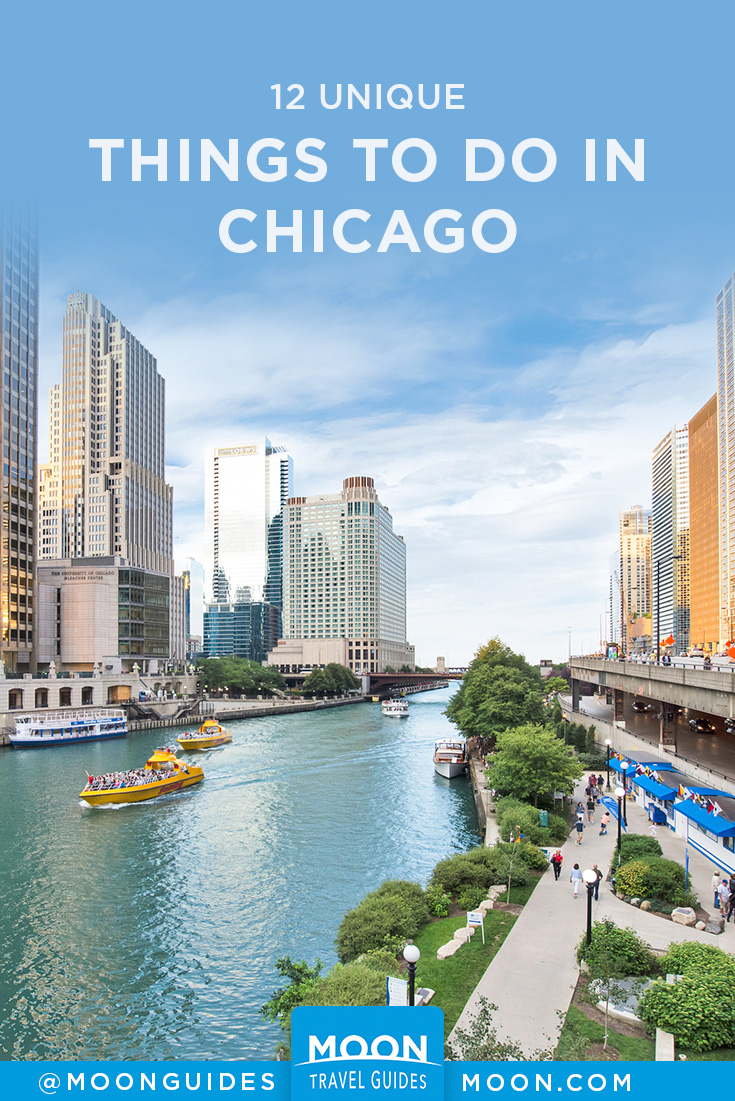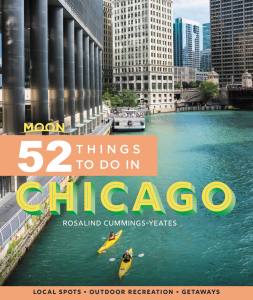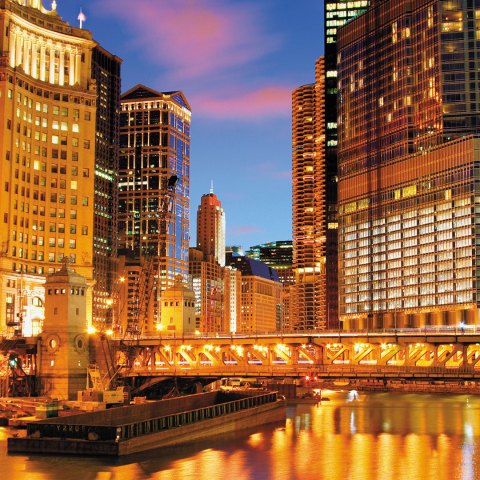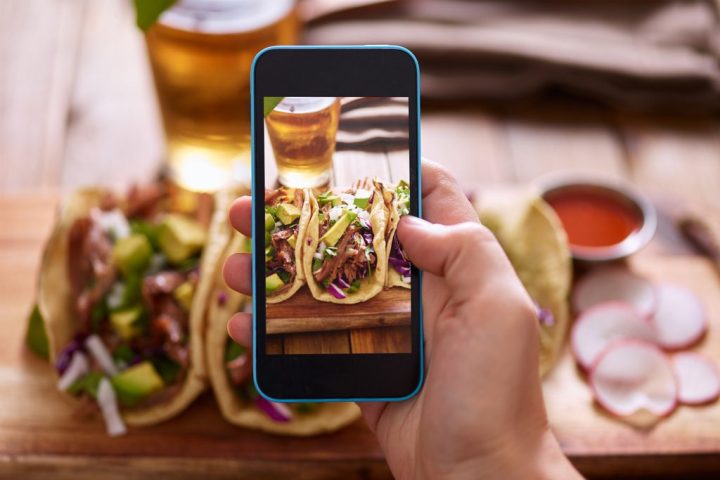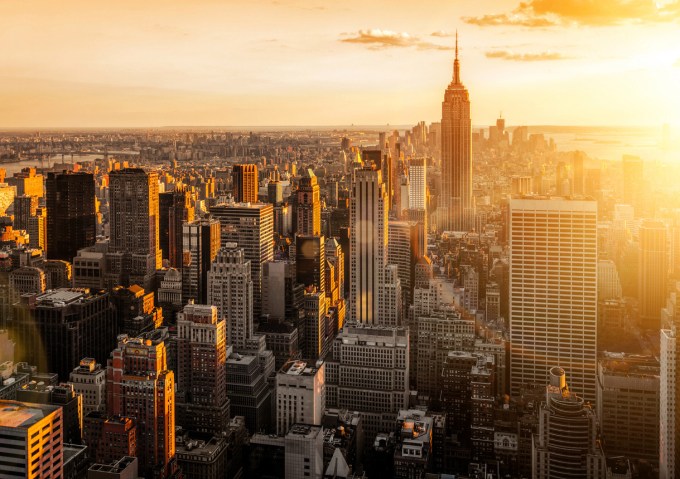12 Unique Things to Do in Chicago
The streets of Chicago crackle with energy and history. Vibrant personalities, softened by Midwestern warmth, flow through its 77 neighborhoods. It’s a big city wrapped in small-town sensibilities, both grounded and passionate. Living here grants you hustle and heart. Though this is a place where people still say hello when walking down the street, it requires real contact and honest effort to connect with the essence of Chi-Town. But if you spend some time interacting with locals and picking up the lingo, you will be rewarded. Get to know the real Chicago with these 12 unique things to do.
1. Savor South Side barbecue
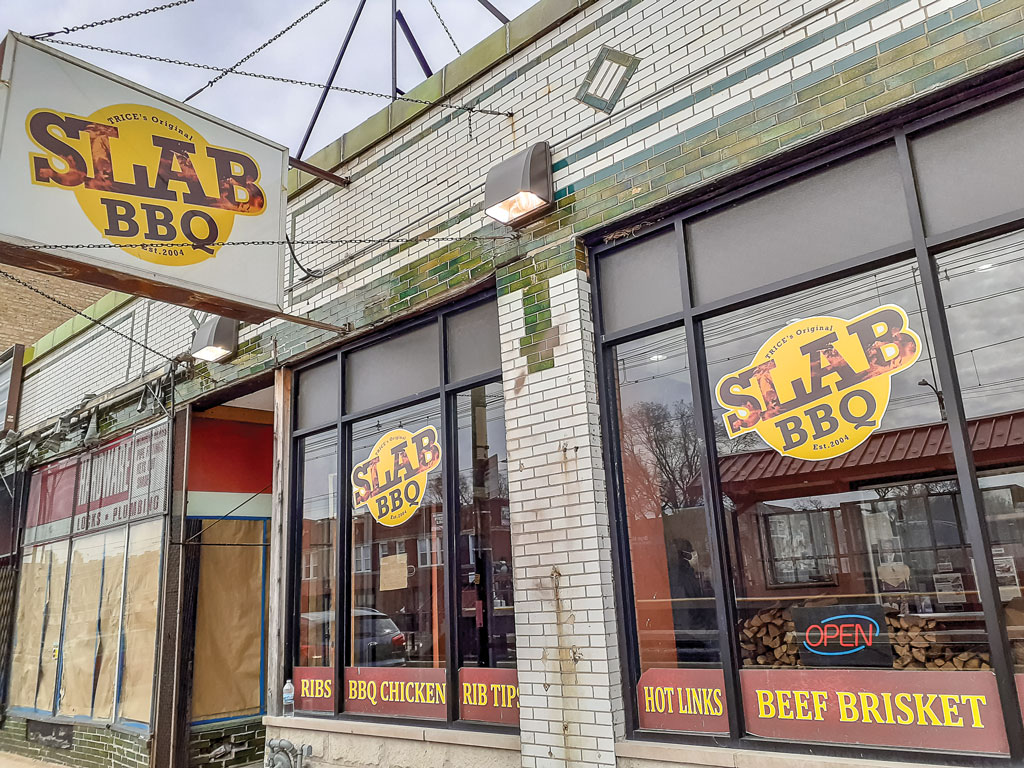
Why Go: Try a Chicago food staple that dates back to the 1930s and transcends the trends.
Where: The South Side boasts lots of barbecue joints, with many of the traditional ones concentrated in the Bronzeville, Chatham, and South Shore neighborhoods. Try Lem’s Bar-B-Q, Honey 1 BBQ in Bronzeville, or Trice’s Original SLAB BBQ.
Timing: The recommendations below are carry-out joints, so you can budget less than an hour for each. Menu items can sell out, so on weekends—which which tend to be busier—the earlier you arrive, the better.
Chicago is famous for many culinary contributions, but barbecue isn’t typically one of them. Yet historians date the first South Side barbecue joint to the 1930s. Chicago attracted large numbers of African American migrants from the Mississippi Delta during the Great Migration, and just as they brought their Delta blues with them—which shaped Chicago’s electric blues—so did they bring their open-pit barbecue traditions, which influenced a distinctive South Side style.
2. Groove to the Chicago blues
Why Go: Visit the former recording studio responsible for producing groundbreaking blues albums, then catch a show at a living legend’s nearby club.
Where: South Loop • L train Green Line to Cermak-McCormick Pl. (Willie Dixon’s Blues Heaven Foundation) or Roosevelt (Buddy Guy’s Legends)
Timing: Plan on an hour for a tour at Willie Dixon’s Blues Heaven Foundation. Sets at Buddy Guy’s Legends last about an hour, but factor in the possibility of staying for multiple sets. You’ll need to arrive a few hours early if you want to snag a table for a show on weekends nights.
The soundtrack of Chicago is undeniably the blues. The power and simplicity of its rhythms and the grit of its moans echo the joys and hardships of life in this city. If you’ve never swayed to a 12-bar blues song belted out by a dynamic musician in a dim bar with liquor fumes and tightly packed fans, then you haven’t experienced an essential part of Chi-Town.
3. Roller-skate Chicago style
Why Go: Learn the moves of the distinct JB skating style developed on the South Side in the 1970s, or just observe practitioners of this vanishing art form.
Where: South Side • L train Red Line to 87th and then CTA bus #87 to 87th St. & Greenwood (The Rink) • L train Red Line to 79th and then CTA bus #79 to 79th St. & Racine (Dr. Martin Luther King, Jr. Park & Family Entertainment Center)
Timing: Plan on an hour for a tour at Willie Dixon’s Blues Heaven Foundation. Sets at Buddy Guy’s Legends last about an hour, but factor in the possibility of staying for multiple sets. You’ll need to arrive a few hours early if you want to snag a table for a show on weekends nights.
In the early 1970s, a distinct Chicago style of skating developed on the South Side. Inspired by James Brown’s kinetic dance steps, a man named Calvin Small and his friends created a groove-heavy style that they dubbed JB skating. Defined by dazzling moves that went by names like “big wheel,” “crazy legs,” and “gangster walk,” practitioners spun and moved with elastic motions, as if their limbs had no bones; they were essentially dancing with the same energy and creativity as in a club—but on wheels.
4. Listen to classic Chicago jazz
Why Go: Bop the night away at the city’s old-school jazz clubs.
Where: Citywide, but top picks are Green Mill, Andy’s Jazz Club, or Jazz Showcase
Timing: Most jazz sets last 1.5 hours.
Jazz is rooted in the blues and, like the blues, traveled to Chicago by way of the Great Migration, which began around 1916. Specifically, New Orleans-based African American musicians, who had spent years refining what was then referred to as the “New Orleans Sound,” fled the city in response to increasing racism and violence toward the Black community. NOLA legends like King Oliver, Jelly Roll Morton, and Louis Armstrong flocked to Chicago. By the 1920s, the South Side was bursting with “hot jazz,” noted for its improvisation; it was the first time the style was heard outside of New Orleans. From these roots, the Chicago jazz sound developed, with more solos and spotlight on rhythm, as well as fixed ensembles. Around the same time, “race records”—blues and jazz recordings made by and marketed to African American audiences—started rising in popularity and solidified the sound, with Louis Armstrong and his Chicago-based bands, the Hot Five and Hot Seven, recording and releasing genre-defining records that would spread the music across the country.
5. Get out to Grant Park
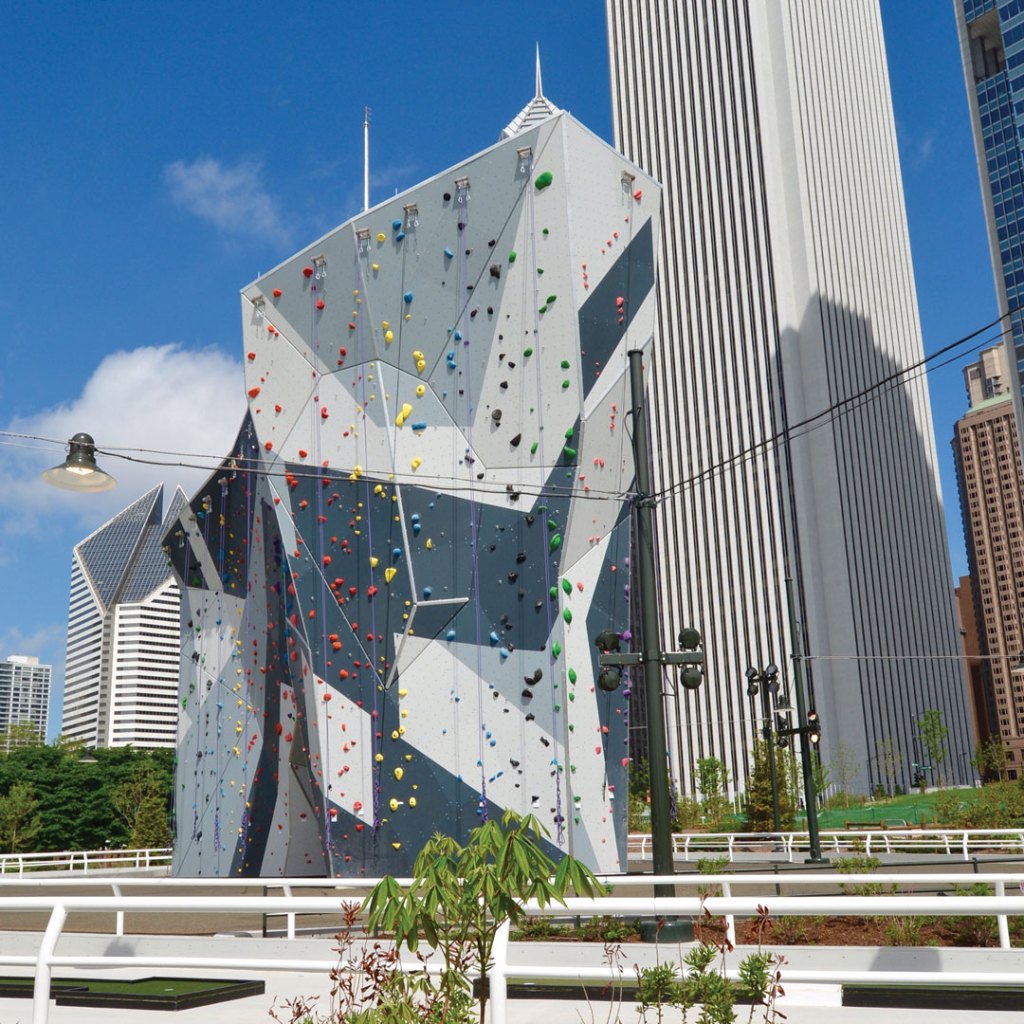
Why Go: Enjoy the abundance of offerings at this celebrated green space that defines the best of Chicago parks.
Where: Park roughly bordered by E. Randolph St. in the north and E. Waldron Dr. in the south, extending east from S. Michigan Ave. to Lake Michigan • 312/742-3918 • www.chicagoparkdistrict.com • free • L train Brown, Orange, Purple, Green, or Pink Lines to Washington/Wabash or Adams/Wabash, or Red Line to Monroe
Timing: While it’s a treat to visit the park year-round, summer is its prime season, while winter brings classic ice-skating experiences.
Nicknamed “Chicago’s Front Yard,” Grant Park encompasses more than 300 acres and is home to classic attractions like the Art Institute of Chicago and the Museum Campus, which hosts the Shedd Aquarium, Soldier Field—home of the Chicago Bears—Adler Planetarium, and Field Museum, all of which draw the tourist crowds. While you could spend days exploring the park’s indoor options, its outdoor offerings aren’t to be missed.
In summer, there’s no better place to be than outside at Grant Park. Summer is every Chicagoans favorite season; we finally get a chance to bask in the sun after six straight months of cold (if you think the seasons of spring and fall actually exist, then you’re not from Chicago), and we revel in the warmth by squeezing in as much time outdoors as possible.
6. Chow down on classic Chicago eats
Why Go: You have to eat sometime—and these dishes are Chicago requirements.
Where: Citywide
First things first: If you are a fat-avoiding carb-watcher, Chicago cuisine is not for you. While this celebrated city offers plenty of fresh, healthy dishes, none of them qualify as classics. This is the city of big shoulders and big appetites. There are plenty of arguments about the best versions of these staples, but I won’t entertain them.
Make sure to try:
- deep dish pizza at Pizzeria Due
- the gym shoe sandwich, or “The Jimmy,” at Stony Sub
- the jibarito at Papa’s Cache Sabroso
- a Chicago-style hot dog at Superdawg Drive-In
- Chicago-style Italian beef sandwich at Al’s #1 Italian Beef
- the Original Rainbow Cone
7. Get inspired by Black art at the South Side Community Art Center
Why Go: Visit the oldest African American art museum in the United States.
Where: 3831 S. Michigan Ave. • 773/373-1026 • www.sscartcenter.org • free • L train Green Line to Indiana
Timing: Plan to spend 1-2 hours visiting the museum or attending an event.
Overlooking the 3800 block of Michigan Avenue like a grand red-brick sentry, the South Side Community Art Center is the cultural jewel of Bronzeville. Opened in 1940 as part of the New Deal and dedicated by Eleanor Roosevelt, it’s the only African American art center built during the Works Progress Administration (WPA) era to remain continuously open. Co-founder Margaret Burroughs—who would later also co-found the DuSable Museum of African American History—stood on the corner of 39th Street collecting dimes to raise money for this venue that would become the heart of Chicago’s artistic Black community; eventually she and a handful of other artists and activists purchased the 19th-century mansion, and the WPA Federal Art Project supported its renovation and remodeling. In 2017, the South Side Community Art Center was named a National Treasure by the National Trust for Historic Preservation, and in 2018 it was listed on the National Register of Historic Places.
8. Take a trip down LSD
Why Go: Drive Chicago’s most iconic expressway for beautiful lake and skyline views.
Where: Along Lake Michigan from Hollywood Ave. in the north to E. 67th St. in the south • www.chicagoparkdistrict.com
Timing: Lake Shore Drive is 15 miles long and should technically take only 30 minutes to drive. But that never happens (traffic, construction, gawkers); give yourself 1-3 hours to allow for a leisurely ride and some stops. On weekends, the earlier you head out, the better; 8am is an optimum time to avoid traffic. On weekdays avoid rush-hour traffic by planning a drive between 11am and 4pm.
Cruising down Lake Shore Drive, drifting past beaches, parks, and people, is a quarterly requirement. The scenery is different in each season, with bikini-clad volleyball players in summer (for a balmy ride on a summer night, you might wanna put “Lake Shore Drive” by Aliotta Haynes and Jeremiah on your playlist), gold and red foliage in fall, frozen lake panoramas in winter, and blooming flowers in spring.
9. Ramble the Riverwalk
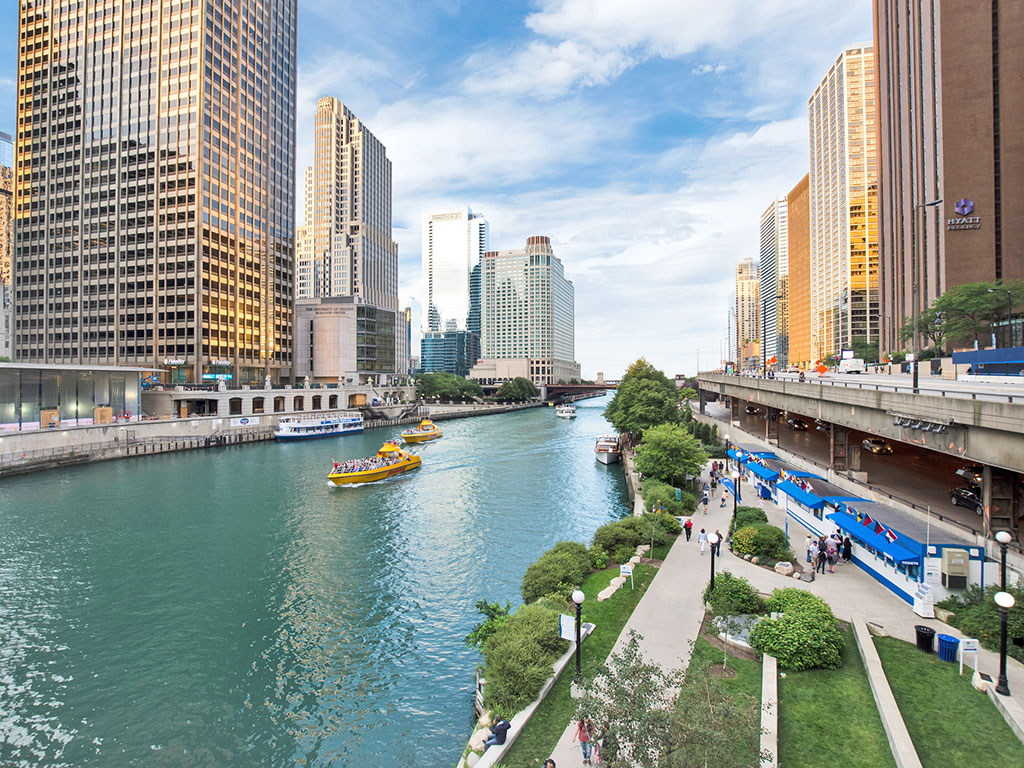
Why Go: Enjoy downtown action on the waterfront.
Where: Western trailhead at E. Lake St. and W. Wacker Dr., eastern trailhead at Lake Shore Dr./Lake Michigan • www.chicagoriverwalk.us • L train Blue, Green, Pink, Brown, or Orange Lines to Clark/Lake • CTA bus #134, #135, or #136 to Wacker & State
Timing: It takes just about 30 minutes to stroll the riverfront path, but you can easily spend a day enjoying its diversions.
Completed in 2016, the Riverwalk transformed 1.25 miles of its shoreline into a legitimate outdoor paradise, with a paved path linking gardens, public art, and restaurants. Although sometimes called “the second lakefront,” the Riverwalk—which follows the Chicago River on the south side of its Main Branch through the Loop to where it meets the lake—has a more urban vibe. This waterfront area is less about recreation and more about hanging out at cafés and bars and people-watching on sunny days.
For serious exploration, start at Lake and Wacker, the westernmost access point. The Riverwalk’s western end, the more developed half, comprises six coves, which are, west to east: The Boardwalk (E. Lake St. to N. Franklin St.), The Jetty (N. Franklin St. to N. Wells St.), The Water Plaza (N. Wells St. to N. LaSalle St.), The River Theater (N. LaSalle St. to N. Clark St.), The Cove (N. Clark St. to N. Dearborn St.), and The Marina (N. Dearborn St. to N. State St.).
10. See world-class Impressionist art at the Art Institute of Chicago
Why Go: Marvel at one of the finest collections of Impressionist artwork found anywhere at this renowned museum.
Where: 111 S. Michigan Ave. • 312/443-3600 • www.artic.edu • $25 adults, $19 students and seniors, free for children • L train Brown, Orange, Purple, Green, or Pink Lines to Adams/Wabash
Timing: Honestly, you could spend all day in the museum, but for a focus on just the Impressionists, allow 2-3 hours.
Founded in 1879 as a museum and school and based in its current home—a building constructed for the Chicago World’s Fair—since 1893, the Art Institute of Chicago today comprises one million square feet of space and 300,000 artworks and artifacts that it displays in 30 rotating exhibits. Construction of its Modern Wing in 2009 made it the second largest art museum in the country, second only to The Met in New York. While the institute’s collection spans countries and centuries, it’s particularly acclaimed for its Impressionist works, a focus on which makes a fine entry point to what can be an overwhelming abundance of riches.
11. Laugh out loud at Second City
Why Go: See a live show by the group that started a worldwide comedy revolution.
Where: 1616 N. Wells St. • www.secondcity.com • L train Brown or Purple Lines to Sedgwick
Timing: Buy tickets online at least a month in advance for Mainstage shows and a few days in advance for the UP Comedy Club. Seating is general admission, and doors open 45 minutes before the show. Shows typically last about two hours.
Spawning celebrity alumni left and right, the Second City has become a comedic empire and brand of its own, so many people forget that the term “Second City” actually refers to Chicago—because its population used to be the second largest in the country after New York. In 1952, snarky New Yorker writer A. J. Liebling used the term as the title for a book deriding Chicago. The Second City founders decided to use this self-mocking name, and it’s been a synonym for Chicago ever since. The improv school has famously served as training grounds for performers from Dan Aykroyd, John Belushi, and Gilda Radner—all of whom went on to become part of the original 1975 cast of Saturday Night Live—to Eugene Levy and Catherine O’Hara of TV series Schitt’s Creek and Christopher Guest-directed mockumentaries like Best in Show. The Second City may now have global reach, with improv schools and comedy theater outposts in L.A. and Toronto, but the phenomenon started out in a tiny Old Town space in 1959.
12. Learn about labor history at the Pullman National Monument
Why Go: Walk around one of the first planned industrial communities in the country and learn about its place in labor and African American history.
Where: 11141 S. Cottage Grove Ave. • www.nps.gov/pull • free admission to the grounds, $5 admission to the National A. Philip Randolph Porter Museum
Timing: Budget about two hours. Note that the National A. Philip Randolph Pullman Porter Museum is generally closed mid-December-March except by advance appointment.
George Pullman amassed a fortune by developing comfortable and elegant accommodations—in particular, sleeper cars—for cross-country railroad trips. The first Pullman sleeper car was constructed in 1864, and demand grew so much that by 1867 he founded the Pullman Palace Car Company. The massive workforce required to manufacture the cars inspired Pullman to found one of the first planned industrial communities in the U.S., just south of Chicago’s then-borders. Established in 1880, the town was noted for its sophisticated architecture.
Pullman held rigid character expectations for anyone who lived in town—primarily white factory workers—and slashed wages when the economy faltered, without similarly cutting rents. In 1894, discontent workers organized a strike in Pullman factories, and were supported via boycott by the American Railway Union, to which many of them belonged. This devastated railway traffic across the country and marked a milestone in labor history as one of the first national labor disputes.
Another major milestone in the labor movement also arose out of Pullman. The company hired African Americans as porters, and became the largest employer of Black people in the country at the time. But African Americans were blocked from joining unions, so they had no say in their working conditions—such as putting in 400 hours a month. Led by A. Philip Randolph, the Pullman porters in 1925 formed the Brotherhood of Sleeping Car Porters, the country’s first Black union. It took 12 years, but the union eventually signed a contract with the Pullman company to act as the bargaining agent for the Black workforce.
By clicking ‘Sign Up,’ I acknowledge that I have read and agree to Hachette Book Group’s Privacy Policy and Terms of Use
Explore More
Pin it for Later
